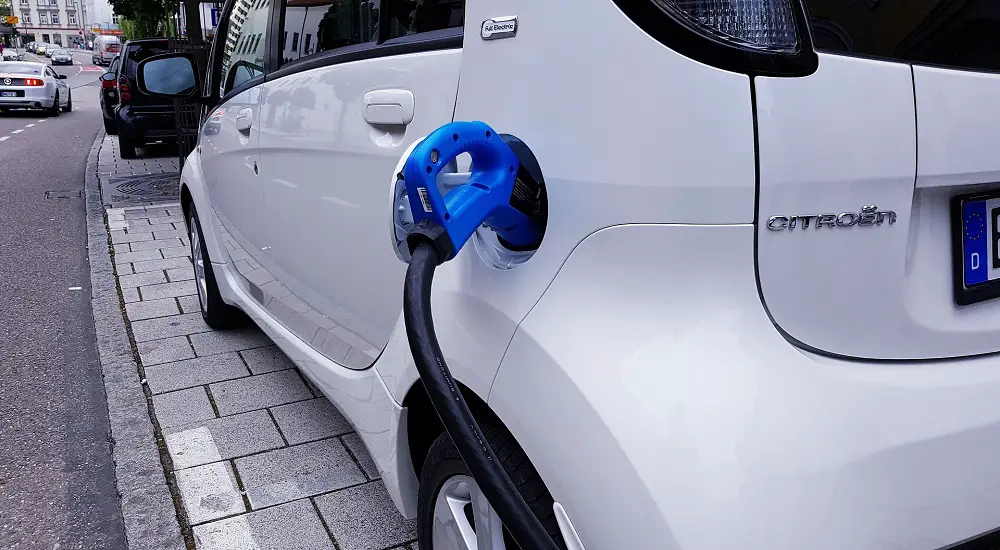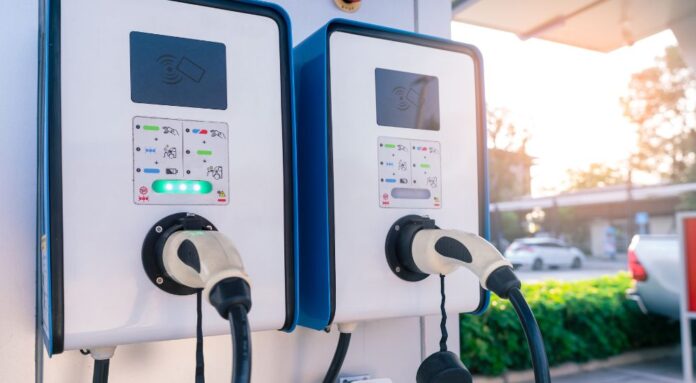The government of Nepal will build 424 electric vehicle (EV) charging stations on 80 highways across Nepal in a PPP model. These charging stations will be set up in strategic locations on the highway to facilitate long-distance travel for electric vehicles. This is the largest government initiative for charging stations after NEA’s 50 EV charging stations.
The latest plan is crafted by the Water and Energy Commission Secretariat. The move helps the government realize sustainable development goals, which include a gradual switch to electric vehicles. The government plans to extend EV market share to up to 95% by 2035 under the Nationally Determined Contributions (NDCs) 3.0.
The Water and Energy Commission Secretariat CDE Jayram Prajapati has called it a master plan. He shared that the number of EVs is growing annually in Nepal, and more EVs require more charging stations.
Ahead, he added that the government will first set up 168 charging stations in the first phase in places with high population density. The first phase is expected to be complete in 1 to 3 years.
| Phase | Charging Stations number | Location Focus | Duration (Expected Completion) |
| First Phase | 168 | High population density areas | 1 to 3 years |
| Second Phase | 123 | Between two major cities | 3 to 6 years |
| Third Phase | 133 | Urban-oriented areas | 6 to 10 years |
In the second phase, 123 charging stations in the middle of two major cities and in the third phase, 133 charging stations in Urban-oriented areas will be built. Both these phases’ work will be completed in 3 to 6 years and 6 to 10 years, respectively.
424 EV charging stations in the PPP model
It’s proposed that the ambitious 424 EV charging stations will be headed in a public–private partnership (PPP) model. To fund the project, the government will coordinate with domestic and international institutions in loans and grants, and also dialogue with provincial governments.
It’s estimated that the project will cost a budget of Rs 28.88 billion.
The proposal reflects the government’s acknowledgement of the private sector’s contribution to greener transport.

The government has proposed four types of share models in the PPP model of investment:
- Model 1: 100 percent public share,
- Model 2: 100 percent private sector,
- Model 3: 51 percent public and 49 percent private sector,
- Model 4: 49 percent public share and 51 percent ownership of the private sector.
Similarly, it’s proposed that the federal and provincial governments provide regulatory support, land, and initial funding, while private investors can contribute technical expertise, operational efficiency, and additional capital. The government expects that this type of collaboration will reduce costs for the project and ensure the sustainable operation of the project.
Under this initiative, charging stations of up to 1 megawatt will be set up for heavy vehicles. Public transport will get GBT and CCS2 charging stations. These cover most of the electric cars and vehicles brought and sold in Nepal.
Major boost for EV growth in Nepal
The large-scale charging station network will further reinvigorate the EV market growth in Nepal. Even potential buyers shrug off due to the lack of charging networks, especially on the highway for long travels. But with the government’s latest drive to have more and capable charging stations across the major cities on the highways, it will serve as a big boon and boost for the industry.
Nepal wants to shift towards green vehicles and requires government subsidies, awareness, and more literacy on electric vehicles. Initiatives like this one are vital to ensure that more people opt for eco-friendly transport in the coming days.
Check out: ADAS in cars explained | Level 0 to 5 | Automation



